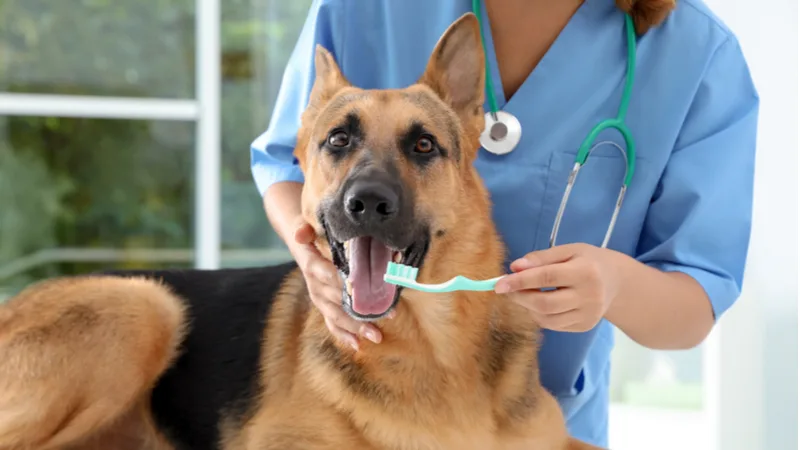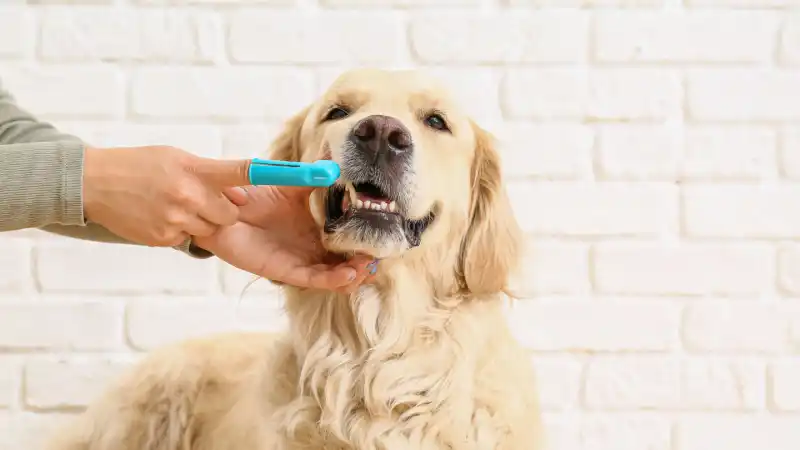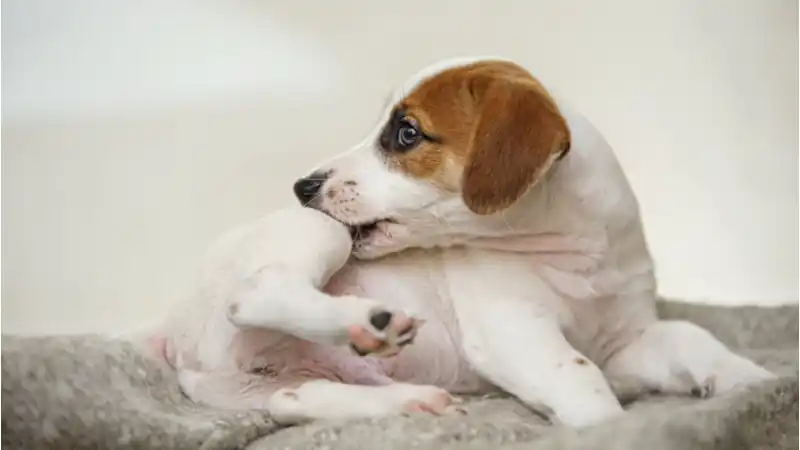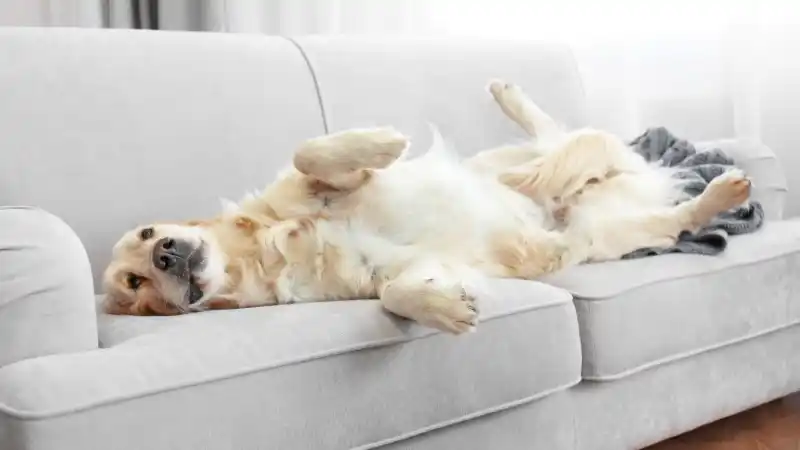Dental Disease Prevention for Pets
Dental care is a key aspect of pet health. With AKC Pet Insurance add-ons, you can cover annual teeth cleaning and other wellness routines for pets.

How many of you remember being told as a kid to brush your teeth before bed? Now, think of your pets… who is in charge of brushing their teeth? They can’t do it on their own. And who is responsible for making sure that they have healthy teeth and gums as they age? That duty falls on you and your veterinarian. Together, you can create an oral healthcare plan and help prevent dental disease in your dog or cat.
The Importance of Regular Vet Visits
Changes in our pets’ oral health often goes unnoticed because pets don’t always show discomfort until dental or gum disease is severe. In some cases, they don’t show obvious signs even when disease is advanced. Also, most people don’t regularly look at their pet’s teeth, especially those in the back of the mouth.
This is one of many reasons why annual or semiannual exams with your veterinarian are so important. Your vet will take a more in-depth look at your pet’s teeth and give you advice on prevention or treatment. Without regular dental prevention, tartar will begin to build up. If left unchecked, it will lead to gum inflammation caused by an infection known as gingivitis. As the process becomes more severe, it can escalate to periodontitis, which involves gum recession, tooth decay, bone loss around the tooth, and infection.
5 Pet Tooth Brushing Tips
Dental prevention begins at home and continues at regular veterinary visits. The best and most effective at-home care is brushing your pet’s teeth. This is the most effective way to remove plaque, the precursor to tartar. It is best to start this routine when your pet is young, but it can be done at any age with a finger brush or pet-friendly toothbrush. You will also want to get a veterinary toothpaste, as human toothpaste has detergents and fluoride that can be harmful if swallowed. Virbac Animal Health has created a video tutorial for dogs and cats to help you get started brushing!
Here are 5 tips for at-home brushing:
Start slow and don’t get frustrated. It will take time to get good at the routine.
Remember to only brush the outside of the teeth.
Brushing daily is best, but a couple times a week is better than nothing at all.
At-home brushing may not be suitable for every pet and your safety is always a concern. So, be sure to discuss technique and other preventive measures with your veterinary team.
There are numerous products on the market claiming to prevent dental disease, including chew toys, liquids, and powders. In order to know which ones are the most effective, check the Veterinary Oral Health Council’s list of accepted products. Be sure to monitor your pet if you choose to offer chew toys.

Every Dog and Cat Deserves the Pet Insurance of Champions
Get prize-winning care for your pets.
What Is Dental Prophylaxis?
Your veterinarian is also a good source of information when it comes to developing a preventive plan and determining when a professional dental prophylaxis will be needed.
A dental prophylaxis is a complete oral health evaluation that includes:
Charting of all teeth, their condition, as well as noting missing teeth.
An entire exam of the mouth, including the back of the throat, under the tongue, gums, and cheeks.
X-rays of all the teeth to evaluate the crown of the tooth, the roots, and the bone surrounding the teeth.
Creation of a treatment plan for any diseased teeth.
Removing the tartar with an ultrasonic water scaler both above and below the gumline, as well as repeating on both the inside and outside of the teeth. (Do not attempt to do this at home with a brush!)
Fluoride application after the teeth have been cleaned.
Just like people need to visit the dentist for a routine cleaning despite the best brushing and flossing routine, our pets need a dental prophylaxis to remove tartar and thoroughly assess their oral health.
Use of Anesthesia During Prophylaxis
A complete dental prophylaxis must be done under anesthesia for our pets. It is not possible or safe to perform this procedure without anesthesia. Therefore, a thorough exam by a veterinarian prior to anesthesia with a comprehensive lab panel is essential to give your pet the best chance at a good outcome while “under.”
Most practices will use anesthetic monitoring equipment, as well as a dedicated assistant, to increase the safety of anesthesia. Monitoring often includes tracking heart rate, respiration, blood pressure, and other vital signs during the anesthetic process. Many practices now have digital dental radiography and ultrasonic scalers. These tools decrease the amount of time your pet is under anesthesia, because you do not need to develop film or slowly scale the teeth by hand.
Talk with your veterinarian about their safety practices for anesthesia and the dental procedure to help you feel more comfortable with this important part of your pet’s care. You may also want to consider pet insurance with dental coverage. For example, optional wellness coverage from AKC Pet Insurance (underwritten by Independence American Insurance Company) include wellness lab work and teeth cleaning*.
Alternatives to Dental Prophylaxis
A non-anesthetic dental treatment has been noted as an alternative to a complete anesthetic dental prophylaxis. This procedure is only for removing tartar from the surface of the teeth. It can’t address diseased teeth, nor does it allow for any x-rays to be taken to identify issues with the roots or surrounding bone. It is not a complete oral exam, only a cleaning.
If done under veterinary supervision, it may be helpful as part of a prevention plan. Overall, regular brushing and a dental prophylaxis will be your best bet for keeping your pet’s teeth and gums as healthy as possible for as long as possible.
*Available with DefenderPlus Coverage

Every Dog and Cat Deserves the Pet Insurance of Champions
Get prize-winning care for your pets.
Dr. Preston Turano graduated from the University of Illinois College of Veterinary Medicine in 2002. Since that time, he has been a Veterinarian, Medical Director, and Practice Owner.
READ MORE ARTICLES

